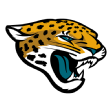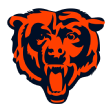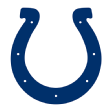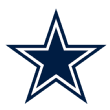NFL Nation reporters assess every second-round pick.

33. Green Bay Packers
Kevin King, CB, Washington | Highlights
Why they did it: When you fielded the 31st-ranked pass defense last season, what choice do you have but to pick a cornerback? And this isn't just any cornerback. It's a 6-foot-3, 200-pounder who ran a 4.43 40-yard dash at the combine. He becomes the Packers' biggest cornerback, one inch taller than LaDarius Gunter. The Packers gave up 26 passing touchdowns to wide receivers last season, most in the NFL, and they had only seven interceptions on passes to receivers last season, tied for the second fewest in the NFL.
Biggest question: What does this mean for Damarious Randall and Quinten Rollins? It was only two years ago when the Packers used their first- and second-round picks on those two cornerbacks. After promising rookie seasons, they regressed last season in part because of injuries. The Packers also brought back veteran cornerback Davon House, who spent the past two seasons in Jacksonville after four years in Green Bay.
-- Rob Demovsky

34. Jacksonville Jaguars
Cam Robinson, OT, Alabama | Highlights
Why they did it: The Jaguars' offensive line needed an upgrade, especially in terms of size and toughness, with the 310-pound Robinson. GM Dave Caldwell said Robinson will stay at left tackle and compete with Branden Allen, whom the team traded for in March, for the starting job. The Jaguars have had the NFL's worst ground game (92.1 yards per game) since 2012 and Robinson pairs with first-round pick Leonard Fournette to give the Jaguars an upgrade.
Biggest question: He's starting his career at left tackle, but if he loses the battle to Albert, does he move inside to guard? There's some thought he might be better off playing guard for a year a two and then moving outside. Robinson had some off-field issues (an arrest for marijuana and weapons possession, but he wasn't charged), but the Jaguars say they investigated thoroughly and believe he won't be a problem.
-- Mike DiRocco

35. Seattle Seahawks
Malik McDowell, DT, Michigan State | Highlights
Why they did it: The Seahawks need to get younger on defense -- specifically up front. Michael Bennett and Cliff Avril are Pro Bowl-caliber players, but both guys are 31 years old. McDowell (6-foot-6, 295 pounds) gives them a talented defensive tackle who should be able to contribute as an interior pass-rusher immediately and eventually move into a starting role.
Biggest question: Should they have addressed the offensive line instead? Guard Forrest Lamp was still on the board even after the Seahawks traded back three times. McDowell is considered a talented prospect, but he had only 1.5 sacks last season. Reaching for positional needs can lead to mistakes, but it's fair to wonder if the Seahawks could have waited until later in the draft to add a defensive tackle.
-- Sheil Kapadia

36. Arizona Cardinals
Budda Baker, S, Washington | Highlights
Why they did it: Arizona lost Tony Jefferson and D.J. Swearinger in free agency, but adding Baker will give the Cardinals another versatile option -- the type of safety they covet. Baker is small -- 5-foot-9, 195 pounds -- but he's able to play deep safety as well as play in the slot in sub packages.
Biggest question: The immediate question surrounding Baker in Arizona's defense will be how well he'll adjust to being a multidimensional safety at the NFL level. There are questions about his hitting ability, but if Tyrann Mathieu remains healthy, where and how Baker will fit on the field remains to be seen.
-- Josh Weinfuss

37. Buffalo Bills
Zay Jones, WR, East Carolina | Highlights
Why they did it: Coach Sean McDermott said he would be lying if Bills wide receivers coach Phil McGeoghan's familiarity with Jones did not help in making this pick. McGeoghan was Jones' position coach last season at East Carolina. The Bills had a need for a No. 2 receiver after losing Robert Woods in free agency. Jones is not a lock to fill that spot immediately, but he will at least compete with free-agent additions Andre Holmes and Philly Brown for a role.
Biggest question: The Bills felt the ranks of wide receivers were thinning as the second round began, which prompted them to trade picks 44 and 91 for 37 and the Rams' fifth-round selection (No. 149). However, giving up the third-round pick could prove a steep price to move up only eight spots for Jones.
-- Mike Rodak

38. Los Angeles Chargers
Forrest Lamp, G, Western Kentucky | Highlights
Why they did it: The Chargers had trouble keeping quarterback Philip Rivers upright last season and Lamp should help in that regard. Chargers head coach Anthony Lynn said the team will have an open competition at all three interior offensive line positions, and Lamp could start at any of those three spots. Lamp also has enough athleticism to play tackle at the next level.
Biggest question: Lamp did not play against top-level competition while competing for the Hilltoppers, so how he transitions to the NFL could be an issue. At 6-foot-4, 309 pounds, with shorter arms, how he handles taller, quicker pass rushers inside also is something to watch as Lamp transitions to the NFL.
-- Eric Williams

39. New York Jets
Marcus Maye, S, Florida | Highlights
Why they did it: They don't believe in Calvin Pryor, a former first-round pick entering the final year of his rookie contract. By picking safeties in the first and second round -- Jamal Adams and Maye -- the Jets almost certainly will trade (unlikely) or release Pryor. Injured Marcus Gilchrist also is on thin ice. Maye is a versatile player who can play strong and free safety, even some slot corner. By picking two defensive backs, the Jets confirmed what the entire world knew last season: The secondary was a train wreck.
Biggest question: Frankly, this seems like overkill. General manager Mike Maccagnan shouldve used the pick on an offensive skill-position player, not another safety. They still have a glaring need at tight end. On the positive side, at least they didn't waste a pick on another quarterback project.
-- Rich Cimini

40. Carolina Panthers
Curtis Samuel, WR, Ohio State | Highlights
Why they did it: Samuel is a playmaker and the Panthers are looking for players to take the pressure off quarterback Cam Newton as this offense evolves. Much like first-round pick Christian McCaffrey, Samuel is versatile, a jack-of-all trades. He was the only player in college football during the 2016 season to record at least 700 yards rushing and receiving. He also adds speed to an offense in need of that after losing wide receiver Ted Ginn Jr. in free agency. Samuel ran the 40-yard dash in 4.31 seconds.
Biggest question: His size (5-11, 197) and exactly where he fits in. He'll probably compete immediately for the slot receiver spot and replace another former Ohio State product, Philly Brown, who wasn't re-signed. He hasn't always proven to have the best hands, but that's something the Panthers can teach.
-- David Newton

41. Minnesota Vikings
Dalvin Cook, RB, Florida State | Highlights
Why they did it: The Vikings have shifted their philosophy at the running back position, and Dalvin Cook comes to the team as the kind of back who can fit in Pat Shurmur's offense as a receiving option out of the backfield. The Vikings' offense is short on playmakers, and Cook could provide a big-play option for a team that sorely needs them.
Biggest question: He slipped out of the first round because of off-field concerns, and was arrested in 2015 on misdemeanor battery charges, though he was found not guilty. He fumbled 13 times at Florida State, and had a history of injuries in college.
-- Ben Goessling

42. New Orleans Saints
Marcus Williams, S, Utah | Highlights
Why they did it: Easy -- the Saints had the No. 32-ranked pass defense in the NFL last year, and they need as many impact playmakers as they can find. That’s exactly what Williams (6-1, 202) is – a free safety who had 10 interceptions over the past two years and four forced fumbles in his three-year career.
Biggest question: The Saints have an awful lot of safeties now, with veterans Kenny Vaccaro and Rafael Bush and last year's second-round pick Vonn Bell, among others. But they'll find room for Williams if he flashes playmaking skills early, and they often use three-safety packages. The Saints also went secondary with their No. 11 pick -- cornerback Marshon Lattimore. But one huge need area where they have still come up short so far this offseason is edge rusher.
-- Mike Triplett

43. Philadelphia Eagles
Sidney Jones, CB, Washington | Highlights
Why they did it: The Eagles were very interested in drafting Jones in the first round before he ruptured his Achilles at Washington's pro day. The front office knows they are not quite championship caliber, and can take the long view here with the hopes that one of the top talents in the draft makes a full recovery and shines in 2018 and beyond.
Biggest question: Will Jones ever be the same player? Achilles injuries are serious, and it's fair to wonder if there will be any long-term impact. Cornerbacks depend on their speed and explosiveness, obviously, and Jones will need every ounce of his to compete at a high level in the NFL. This is a boom-or-bust selection.
-- Tim McManus

44. Los Angeles Rams
Gerald Everett, TE, South Alabama | Highlights
Why they did it: Look no further than last year's Redskins offense, overseen by former coordinator Sean McVay. No team received more yards out of tight ends, and with the Rams, McVay needed another one to complement last year's fourth-round pick, Tyler Higbee. Like Higbee, Everett has size (6-foot-3, 239 pounds) and is a major threat in the passing game.
Biggest question: Everett, like Higbee, needs to improve as a blocker. Another concern would be the Rams' overall youth at that position after cutting ties with veteran Lance Kendricks earlier this offseason. Their only pass-catching tight ends -- Everett, Higbee and Temarrick Hemingway -- have combined for 11 NFL receptions. But maybe Everett is McVay's new Jordan Reed.
-- Alden Gonzalez

45. Chicago Bears
Adam Shaheen, TE, Ashland | Highlights
Why they did it: Shaheen is 6-foot-6, 278 pounds, but he can also catch the football. The ceiling looks to be sizable. And while Chicago signed veteran tight end Dion Sims in free agency, Zach Miller is coming off yet another injury. Tight end depth was a problem for the Bears in 2016.
Biggest question: Shaheen played at Division II Ashland. That's a serious jump up in competition. For all the size and athleticism -- Shaheen has plenty of both -- he still falls into the category of project. Don't the Bears have enough of those already? Plus, the Bears missed out on adding another defensive back. Aaron Rodgers is probably happy about that.
-- Jeff Dickerson

46. Indianapolis Colts
Quincy Wilson, CB, Florida | Highlights
Why they did it: The Colts' cupboard was basically empty at cornerback. They've been desperate for a second cornerback to go with Vontae Davis, once a back-to-back Pro Bowler. There have also been failed experiments with veteran Greg Toler and Patrick Robinson, who was released earlier this offseason. Wilson, a physical cornerback, will be given every opportunity to be the Week 1 starter for the Colts.
Biggest question: Wilson uses his strength to mask what isn't considered blazing speed. He struggles if he doesn't get a good jam on the receiver at the line scrimmage. Wilson ran a 4.54 40-yard dash during the combine.
-- Mike Wells

47. Baltimore Ravens
Tyus Bowser, LB, Houston | Highlights
Why they did it: The Ravens addressed one of the biggest priorities on the team. Baltimore had to improve getting to the quarterback after finishing 24th in the league with 31 sacks last season. So, the Ravens grab one of the most explosive pass-rushers in Bowser, who totaled 8.5 sacks and 12 tackles for loss in only eight games last season. The Ravens selected Bowser over two other highly rated pass-rushers, Kansas State's Jordan Willis and Alabama's Tim Williams.
Biggest question: When are the Ravens going to help out Joe Flacco and the offense? So far this offseason, Baltimore has added only running back Danny Woodhead and backup quarterback Ryan Mallett. The Ravens have needs at wide receiver, offensive line and running back. At this pick, Baltimore chose Bowser over USC wide receiver JuJu Smith-Schuster.
-- Jamison Hensley

48. Cincinnati Bengals
Joe Mixon, RB, Oklahoma | Highlights
Why they did it: The Bengals have made no secret of their wish to upgrade their offense, with an emphasis on the running backs. Mixon was ranked the No. 2 running back on their board, so to get him midway through the second round was a dream scenario for Cincinnati. On the field, Mixon can essentially do it all, and he will come to Cincinnati during a time when Jeremy Hill is going through some struggles and Giovani Bernard is coming off an ACL tear. Mixon would have been a sure first-rounder if it were not for character concerns and off-the-field issues. Going purely on his talents, he is one of the best players in the draft.
Biggest question: Can the Bengals afford to take a chance on another player with character concerns? Mixon punched a woman in the face, breaking bones in her jaw, after a verbal altercation occurred in a bar in 2014. Mixon, 18 at the time of the incident, was suspended for a year and reached a plea agreement in the case. He recently settled with the woman. But while the Bengals say the incident is behind him, drafting Mixon comes at a time when they are already dealing with the fallout of Adam Jones' arrest in January. Drafting Mixon comes with its questions, and it certainly will come with some deserved scrutiny.
-- Katherine Terrell

49. Washington Redskins
Ryan Anderson, LB, Alabama | Highlights
Why they did it: Junior Galette hasn't played in two years, Trent Murphy is suspended for the first four games and is a pending free agent, and Preston Smith hasn't quite developed the way the Redskins had hoped. With Anderson, Smith could end up rushing more inside where he can be effective. So adding Anderson -- considered a leader who is great with his hands -- gives the Redskins a chance to be more versatile defensively and gives them another young pass-rusher.
Biggest question: He's not a burner and he does not have great length, two attributes that help any pass-rusher. Will that diminish his ability to work the edge? There are questions about his ability to play in coverage, though how much he'll have to do that early remains to be seen.
-- John Keim

50. Tampa Bay Buccaneers
Justin Evans, S, Texas A&M | Highlights
Why they did it: Bucs safeties struggled significantly last year in the first half of the season and they lost Bradley McDougald. They replaced him with free agent J.J. Wilcox, but they needed another coverage safety. Evans gives them great range and ball skills, along with consistent, all-out effort.
Biggest question: Evans is sometimes too aggressive and gambles, which means he could be susceptible to biting on play-action and being out of position. He's also prone to missed tackles.
-- Jenna Laine

51. Denver Broncos
Marcus Walker, DE, Florida State | Highlights
Why they did it: John Elway's top priority of the offseason was for the Broncos to stay great on defense. Denver thought more highly of Walker than some in the league. But there is no question Walker gets to the quarterback. He had 16 sacks on the season, including a 4.5-sack game against Mississippi.
Biggest question: Walker didn't always show the kind of explosiveness against more athletic blockers. Some scouts say he didn't always play to his potential, but for the Broncos that's defensive line coach Bill Kollar's department.
-- Jeff Legwold

52. Cleveland Browns
DeShone Kizer, QB, Notre Dame | Highlights
Why they did it: The Browns knew they needed to come out of this draft with a quarterback. They didn't get one on Day 1 despite having three first-round picks. In the second round, they waited until the 52nd pick to take Kizer, who joins Cody Kessler, Brock Osweiler and Kevin Hogan on the roster. The position is wide open. The Browns took a shot they needed to take.
Biggest question: How long will it take him to be ready? Kizer looked like a standout in 2015 and early in 2016, but the bottom dropped out in the second half of the season. He'll need his confidence rebuilt and he'll need to answer why Notre Dame went 4-8 last season. At his best, Kizer has prototype size and arm strength for the NFL. But he has to prove himself on the field and in an NFL offense to realize that potential.
-- Pat McManamon

53. Detroit Lions
Teez Tabor, CB, Florida | Highlights
Why they did it: The Lions needed to upgrade their secondary and Tabor fits the size Detroit likes at 6-foot-1, 199 pounds. The No. 9 cornerback in this class, he can defend short routes, and he also can be a good run-stopper on the outside. Considering the Lions gave up an NFL-record completion percentage to opposing quarterbacks last year, he's a player that makes sense for Detroit.
Biggest question: His speed. His 4.62 40-yard dash is a concern, and how he's able to handle speedy downfield guys with height also might be a problem. How fast he will play will be a question since the Lions have Nevin Lawson and signed D.J. Hayden in the offseason.
-- Michael Rothstein

54. Miami Dolphins
Raekwon McMillan, LB, Ohio State | Highlights
Why they did it: The Dolphins needed help at linebacker and finally got it in the second round. McMillan will compete immediately with incumbent outside linebacker Koa Misi, who has struggled with injuries and inconsistency the past couple of seasons. Miami was 30th against the run last year and needs to get more physical in the front seven.
Biggest question: How high is McMillan's ceiling? He was the fifth- or sixth-best player on Ohio State's defense last season, according to most draft projections. Is that worthy of a second-round pick? The Dolphins need impact players immediately on defense and McMillan too often didn't stand out among other stars with the Buckeyes. It will be interesting to see if that changes with the Dolphins.
-- James Walker

55. New York Giants
Dalvin Tomlinson, DT, Alabama | Highlights
Why they did it: Tomlinson (6-3, 310) is big and tough. It's going to be hard to run against him and Damon Harrison in the middle of the Giants' defensive line. The Alabama product is their Johnathan Hankins replacement. Hankins signed recently with the Indianapolis Colts.
Biggest question: He doesn't get off the line quickly and isn't much of a pass-rusher. The Giants still need to find someone on the interior to get after the quarterback. They also passed on an athletic linebacker (something they've needed for years) with Zach Cunningham still on the board.
-- Jordan Raanan

56. Oakland Raiders
Obi Melifonwu, S, Connecticut | Highlights
Why they did it: The Raiders, despite going 12-4, had only the 24th-ranked passing defense in the NFL last season. And while Oakland did use its first-round pick on strong safety Karl Joseph a year ago and free agent Reggie Nelson went to the Pro Bowl, Nelson turns 34 in September and the Raiders need depth in the secondary.
Biggest question: At 6-foot-3, 217 pounds, and with a 4.40-second 40-time, Melifonwu is a genetic freak, as analysts say. But is he more workout warrior than football fiend? He had eight interceptions in four seasons at UConn, with four last year, and was credited with 118 tackles as a senior.
-- Paul Gutierrez

57. Houston Texans
Zach Cunningham, LB, Vanderbilt | Highlights
Why they did it: Texans general manager Rick Smith said in his pre-draft news conference that Houston would pick the best player available instead of focusing on team needs. That appears to be the case with Cunningham. The Texans lost inside linebacker John Simon in free agency, but have a strong group at inside linebacker with veteran Brian Cushing and Benardrick McKinney, who took an impressive step forward last season. In three seasons at Vanderbilt, Cunningham had 295 tackles, including 39.5 for loss and seven forced fumbles.
Biggest question: Cunningham said one area he needs to improve is limiting missed opportunities down the field, especially with tackling. While Cunningham will be a good addition to the Texans' 2016 first-ranked defense, there is a question if this is the biggest need for Houston right now. The Texans also have a need at right tackle and safety.
-- Sarah Barshop

58. Seattle Seahawks
Ethan Pocic, C, LSU | Highlights
Why they did it: It's no secret the Seahawks need to upgrade their offensive line. Versatility has been a theme as of late. One thing Seattle liked about free agent Luke Joeckel was that he could play guard or tackle. Pocic has experience playing center, guard and tackle. He was a three-year starter and should get a chance to compete for playing time.
Biggest question: Where will he play? Pocic's best position in college was at center, but Justin Britt played extremely well there for the Seahawks last season. It's worth noting that Britt is scheduled to be a free agent after 2017, and Pocic could be an option to replace him if he walks. As for the upcoming season, perhaps Pocic could compete for playing time at guard or even tackle.
-- Sheil Kapadia

59. Kansas City Chiefs
Tanoh Kpassagnon, DE, Villanova | Highlights
Why they did it: The Chiefs lost one defensive lineman, Dontari Poe, to free agency and released another, Jaye Howard. The Chiefs face a potential shortage of linemen at the end of the season when Bennie Logan can be a free agent. So the Chiefs are going to need some bodies to add to their playing rotation and Kpassagnon will be given a chance to fill that role.
Biggest question: When will he be ready for NFL football? Kpassagnon played FCS football at Villanova. That's a big leap. The Chiefs won't need him to contribute much as a rookie as long as starting ends Chris Jones and Allen Bailey stay healthy. But he'll need to be up to speed by the 2018 season.
-- Adam Teicher

60. Dallas Cowboys
Chidobe Awuzie, CB, Colorado | Highlights
Why they did it: The Cowboys made their intentions known Thursday when they took defensive end Taco Charlton in the first round. Cornerback was their target and remained their target throughout the round despite seeing four corners go off the board in the second round before them. Awuzie played all over the field for four years. He can play as an outside corner, but he also was able to excel in the slot, especially as a blitzer where he had nine sacks. He forced five fumbles and had 26 tackles for loss.
Biggest question: Is he an immediate starter? In some respects he does the some of the same things as Orlando Scandrick, who will be better in his second year removed from knee surgery. The Cowboys also signed Nolan Carroll in free agency to a three-year deal, and have Anthony Brown, a sixth-round pick from last year, who exceeded expectations.
-- Todd Archer

61. Green Bay Packers
Josh Jones, S, N.C. State | Highlights
Why they did it: They're serious about improving their secondary. After taking cornerback Kevin King at No. 33, they used their other second-round pick on another defensive back. And like King, Jones has speed. Packers director of football operations Eliot Wolf said after picking King they planned to make a concerted effort to get faster. Safe to say they've done that. Jones ran the 40-yard dash in 4.41 seconds at the combine, and King did it in 4.43 seconds. Though safety might not have been among their top needs, Jones could be a replacement for the departed Micah Hyde after the versatile defensive back signed with the Bills in free agency.
Biggest question: When will the Packers draft a running back? At this point, they still only have Ty Montgomery, Christine Michael and Don Jackson as ball carriers. They'd like Oklahoma's Samaje Perine but if they don't trade up from No. 93 overall, there's a chance they'll miss out.
-- Rob Demovsky

62. Pittsburgh Steelers
JuJu Smith-Schuster, WR, USC | Highlights
Why they did it: With Martavis Bryant more bonus than guarantee coming off suspension, the Steelers wanted to add a playmaker somewhere in the first three rounds. The championship window won't be open forever, and 35-year-old Ben Roethlisberger needs more options. Smith-Schuster has adequate size at 6-foot-2, specializes in the contested catch and turned 20 in November. The Steelers like to develop young players.
Biggest question: One knock on Smith-Schuster is his game lacks the wow factor downfield, and the Steelers have a vertical passing offense. But the Steelers like his passion, overall skill set and productivity (3,092 yards, 25 touchdowns in three seasons). Another question: What does Smith-Schuster's arrival mean for former third-round pick Sammie Coates, who struggled while playing through injury a year ago? The Steelers wanted to create competition and did just that.
-- Jeremy Fowler

63. Buffalo Bills
Dion Dawkins, G, Temple | Highlights
Why they did it: Buffalo had a need at right tackle because of three factors: 1. Jordan Mills, who started all 16 games at right tackle last season, struggled and finished 64th at his position in Pro Football Focus rankings. 2. Top swing tackle Cyrus Kouandjio is recovering from offseason hip surgery resulting from a fall at home. 3. Seantrel Henderson, the Bills' starting right tackle in 2015, has five games remaining on a 10-game drug policy suspension and missed significant time last year after undergoing surgery for Crohn's disease.
Biggest question: In trading up 12 spots for Dawkins, the Bills gave up three picks to Atlanta: Nos. 75 (third round), 149 and 163 (both fifth round). That leaves them without a third- or fourth-round pick in this draft. With depth issues across their roster and a continuing need for a weakside linebacker, doing a 1-for-3 swap of picks in this trade makes it tougher for coach Sean McDermott to build out his roster.
-- Mike Rodak

64. Carolina Panthers
Taylor Moton, T, Western Michigan | Highlights
Why they did it: The Panthers needed to upgrade the depth at tackle with the future of Michael Oher, still in the concussion protocol, somewhat in doubt. They don't need Moton (6-foot-5, 319 pounds) to start, but they needed a player to develop, probably at right tackle where Moton started 52 games.
Biggest question: Would the Panthers have gone with Temple guard Dion Dawkins had former Panthers defensive coordinator Sean McDermott, now the head coach at Buffalo, not traded for the pick ahead of Carolina? He was on their board. Could make the conversation before these teams meet in Week 2 interesting.
-- David Newton
































